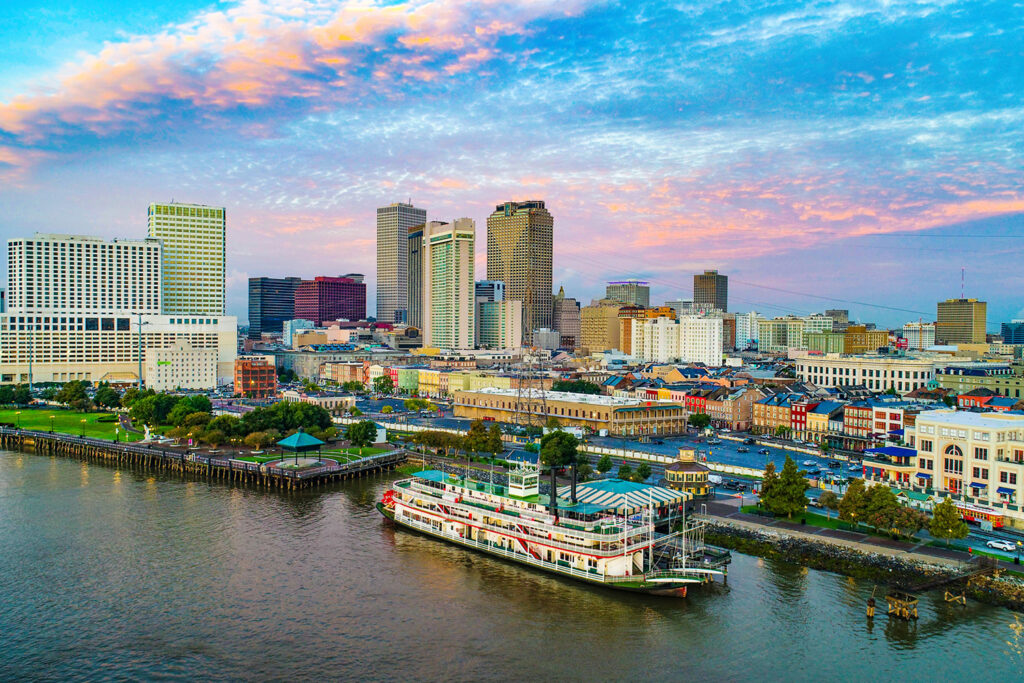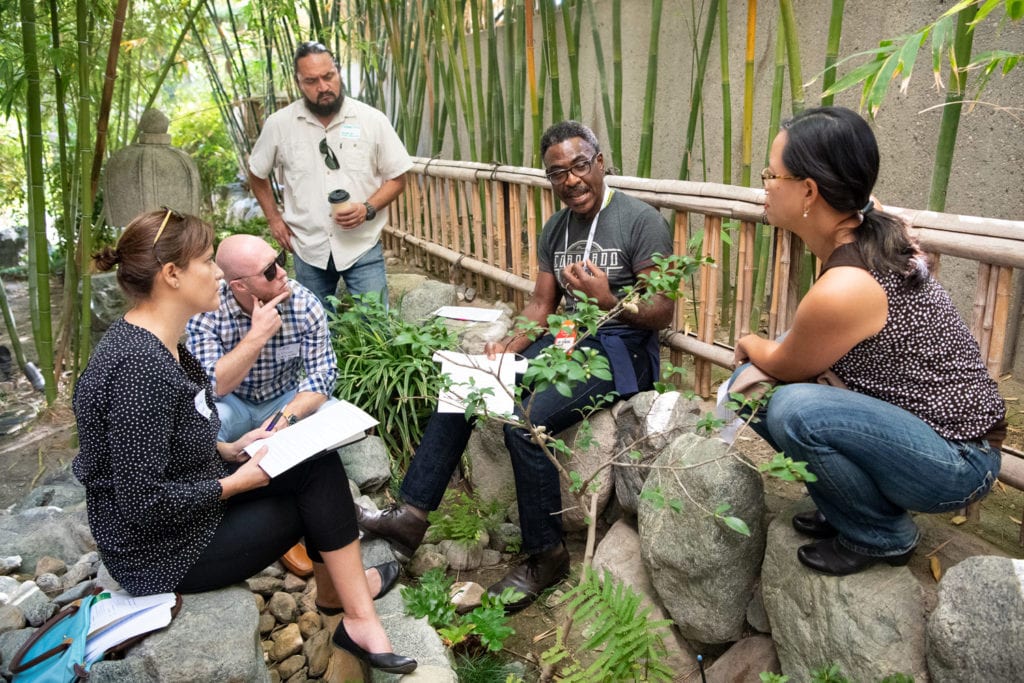Urban C:lab United States Learns the Power of Green Infrastructure with Dana Nunez Brown
Buro Happold’s United States Urban C:lab group took a field trip to New Orleans, Louisiana to speak with Dana Brown, a New Orleans-based landscape architect and planner with expertise in green infrastructure. Dana shared her insights and experiences on the power of green infrastructure to transform communities.
With over 25 years of experience in the field, Brown has witnessed first-hand the positive impact that green infrastructure can have on neighborhoods, cities and the environment. As a native of New Orleans, Dana understands the vital need for dynamic water management and is a pioneer in the field of green infrastructure. Many of her green infrastructure projects are used as demonstrations of best management practices.
Dana Brown & Associates, Inc. is one of the largest landscape architecture and planning firms in Louisiana as well as a state certified Disadvantaged Business Enterprise (DBE), Women’s Business Enterprise (WBE), and Small Business Enterprise (SBE). Read on to learn more about our US Cohort of Urban C:lab’s field trip to New Orleans and their visit with Dana.
For our United States Urban C:lab group, Dana’s work serves as a great example of how to use design to not only solve problem, but also create multiple benefits. Her work, which primarily involves using landscape design to tackle critical flooding issues, presents an innovative, nature-based solution. This aligns well with the objectives of C:lab, and Buro Happold’s work more broadly, which is committed to exploring innovative ideas within the built environment field. With a strong commitment to sustainability and a mission to create a better built environment, Dana’s efforts contribute significantly to the collective goal of enhancing our surroundings through thoughtful design and innovation. The group found it incredibly helpful to understand how they can employ natural base solution to address critical issues in their client’s projects.

What is green infrastructure?
Green infrastructure refers to a network of natural and semi-natural elements that are strategically planned, designed, and managed to provide a range of ecosystem services. It includes various elements such as parks, green spaces, urban forests, wetlands, green roofs, permeable pavements, and vegetated swales.
The concept of green infrastructure aims to mimic natural processes and systems to manage stormwater, reduce urban heat island effects, improve air and water quality, enhance biodiversity, mitigate climate change impacts, and provide recreational and aesthetic benefits.
Key characteristics of green infrastructure include: natural processes, resilience, community engagement and integration with the built infrastructure.
Overall, green infrastructure plays a crucial role in promoting sustainable and livable cities by enhancing environmental quality, supporting biodiversity, and improving the quality of life for urban residents.
Green infrastructure is not just about planting trees and installing rain gardens. It’s about creating a sustainable ecosystem that benefits the environment and the people who live in it.
Dana Brown, FASLA, PLA, AICP, LEED AP

Brown is clear on the importance of community engagement and advocacy in promoting green infrastructure initiatives. She explained that successful projects are those that involve residents and stakeholders from the beginning, ensuring that their needs and priorities are met. By fostering a sense of ownership and responsibility, communities become invested in maintaining and advocating for green infrastructure, creating a lasting impact.
As with all areas of development, there can be barriers and pushbacks to green infrastructure implementation. One of the common challenges Brown often encounters is the perception of high maintenance costs associated with green infrastructure. However, Brown argues that this perception is often unfounded. In reality, the the long-term benefits of green infrastructure (such as reduced flooding, improved air quality and increased property values) far outweigh the initial investment.

Brown’s work with Water Wise Gulf South, a non-profit organization she founded, has been instrumental in promoting green infrastructure initiatives in New Orleans and beyond. Through workshops, training and community engagement initiatives, Water Wise Gulf South has empowered residents to become advocates for green infrastructure and to implement green infrastructure projects in their own neighborhoods.
One of the most successful examples of Water Wise Gulf South’s work is the Gentilly Community Adaptation Program (CAP), a HUD-funded program that provided funding for green infrastructure projects in low-income neighborhoods in New Orleans. The CAP projects not only reduced flooding and improved water quality, but also created jobs, built wealth and empowered residents to take ownership of their community’s environmental resilience.

Brown’s experiences and insights demonstrate the transformative power of green infrastructure to address environmental challenges, improve community well-being and create more sustainable and resilient cities. By engaging communities, addressing barriers and promoting innovative solutions, we can unlock the full potential of green infrastructure to create a greener, healthier and more equitable future for all.
If you are interested in learning more about green infrastructure and how you can become involved in promoting it in your community, take a look at the resources below.





